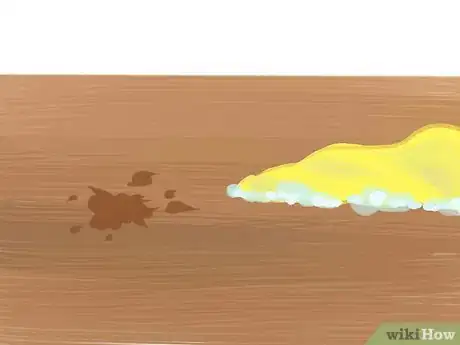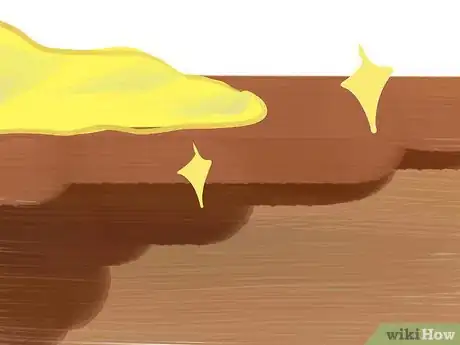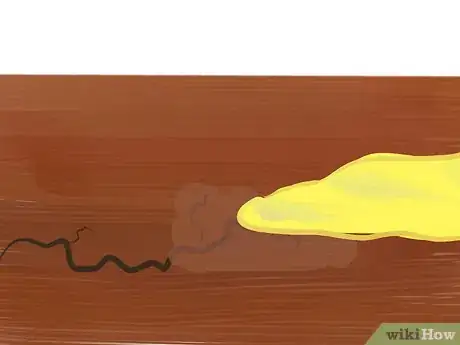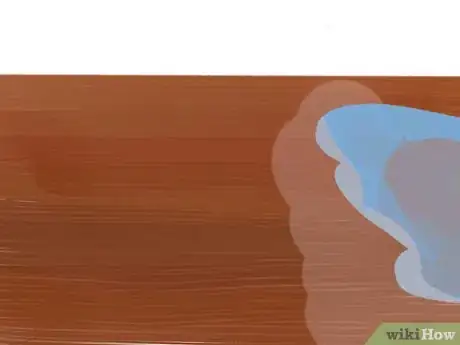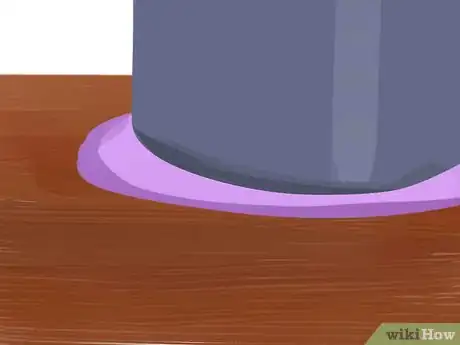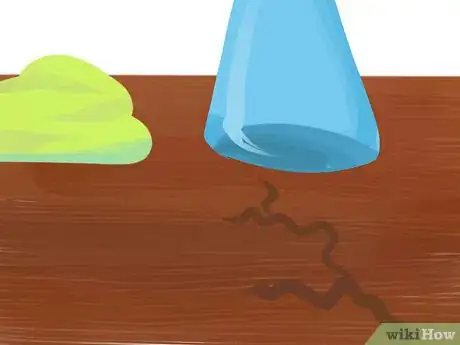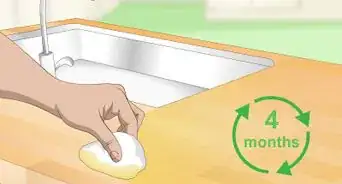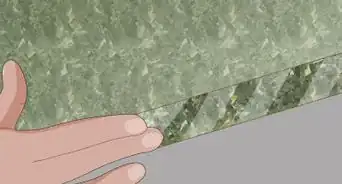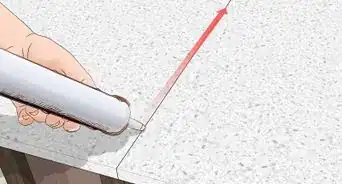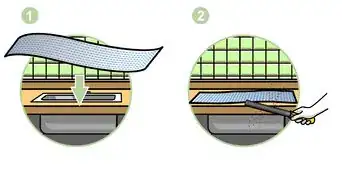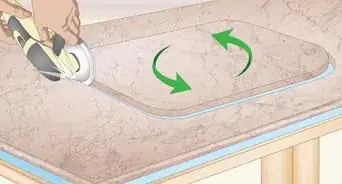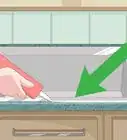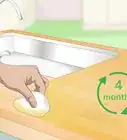This article was co-authored by Guy Peters. Guy Peters is the Owner of MOP STARS Cleaning Service, a complete house cleaning service for residential and commercial clients, based in Denver, Colorado. Founded in 2014, MOP STARS provides regular, move in/out, deep, and commercial cleaning services. Guy has a BA in Finance from the California State University - Sacramento and an MBA from Cornell University.
This article has been viewed 143,877 times.
Wood countertops can be functional, like the thick and durable butcher's block, or decorative, with shiny surfaces and ornate edges. No matter the purpose, these countertops come with pros and cons. You can cut on a butcher's block countertop without dulling your knife. Wood countertops are said to be bacteria resistant but are susceptible to stains, cuts and burns. You can easily protect a wood countertop from these issues. Some other concerns of wood countertops that owners have are bacteria contamination, and warping and cracking of the wood.
Steps
-
1Provide protection from stains. Keep countertops clean to protect them from stains. Stains, buildup and dullness will result on the surface of your wood countertop if it is not cleaned regularly.[1]
- Remove any spills and debris before a stain has opportunity to set in by cleaning the area quickly.
- Wash the wood with soap and warm water. Incorporate daily cleaning into your kitchen routine, and your countertop will look great.
- Rub lemon juice onto stains. Add abrasion to the surface to increase the cleaning power by sprinkling a little salt on with the lemon juice.
- Mix 1 tablespoon hydrogen peroxide into 1 cup warm water. Pour some of the solution onto a stain. Wait a few minutes. Rub the area with a cloth.
- Use wood bleach or oxalic acid on the stain. Rinse the area with water to remove any residual chemicals.
- Sand wood countertops to restore a fresh surface. First use 120 grit sandpaper to remove the stain. Then switch to 180 grit sandpaper to smooth the surface. Finally, apply some mineral oil with a rug.
- Do not use vinegar to clean a wood countertop unless the wood has been sealed. Vinegar can dissolve the glue that binds the wood together and can leave the wood pithy or splintered because it eats away at the wood's density.
-
2Season the wood similar to how a cast iron pan needs to be seasoned.[2]
- Pour a generous amount of warm mineral oil onto the countertop. Oils help prevent warping and cracking. The wood will only accept the amount of oil it needs, so do not fret about applying too much.
- Make sure any oil you use is food-grade. Cooking oils should not be used. They will turn rancid with time and exposure to air, giving off a foul odor.
- Use a rag to rub the oil into the wood.
- Apply oils with the grain of the wood.
- Allow the oil to soak into the wood 20 to 30 minutes.
- Wipe the surface with a cloth or paper towel to remove any excess oil.
Advertisement -
3Fill in cracks with wax. The wax fills in any open pores and small cracks or abrasions.[3]
- Melt paraffin wax or beeswax in the microwave, and add it to mineral oil at a 1:4 ratio.
- Apply this mixture to the wood while the wax is still warm. Spread it over the surface with a cloth.
- Allow the surface to cool and dry, and rub the cloth over it again to polish the surface.
- Reapply wax once a month to maintain the surface.
-
4Seal the countertop to protect it from water and other liquids. If left standing on the countertop, water can damage the wood. Other liquids and foods can stain the wood.[4]
- Apply coats of polyurethane to the countertop surface. A sealed surface makes the countertop easy to clean but is not recommended for cutting surfaces.
- Select a urethane that is FDA approved to ensure the substance is safe to be in contact with your food.
- Apply at least 3 coats to get a good, solid coating.
-
5Protect wood countertops from burns by placing a trivet or potholder between the countertop and hot dishes or cooking vessels.[5]
-
6Clean off any harmful bacteria. Wood kills a lot of bacteria so it is naturally a good choice for countertop material. Countertops are made from hard woods that do not allow for bacteria penetration. You should, however, clean your countertop with an all purpose cleaner to remove any surface bacteria.
-
7Respond appropriately to cracks in wood countertops. On occasion, hairline and a little larger cracks can occur in a wood countertop. These are quite normal and do not mean that you have a defective countertop. You should clean any cracked countertops often and apply a finish over the countertop as soon as possible to seal cracks.
-
8Protect the wood from warping by controlling the humidity in the air around the countertop. Some warping is normal for a wood countertop since wood is a material that is responsive to changes in humidity. Under normal and suggested conditions, your wood countertop will not warp to the extent that it will render the countertop unusable.
- Keep humidity at a fairly consistent level, avoiding drastic fluctuations, by regulating your heater, air conditioner, humidifier or dehumidifier.
Community Q&A
-
QuestionCan I Polyurethane after using oil?
 Community AnswerYes, but not for any counter top that will be used for cutting. The polyurethane can't standup to cutting and you'll end up with polyurethane bits in your food.
Community AnswerYes, but not for any counter top that will be used for cutting. The polyurethane can't standup to cutting and you'll end up with polyurethane bits in your food. -
QuestionCan I put a hot pan on a wood trivet that was sealed with polyurethane?
 Community AnswerNo, the polyurethane will melt to the pan and be removed somewhat by the trivet. Wood is combustible and will scorch, therefore it's an unwise trivet choice.
Community AnswerNo, the polyurethane will melt to the pan and be removed somewhat by the trivet. Wood is combustible and will scorch, therefore it's an unwise trivet choice. -
QuestionDo I have to stain the bottom of a wood countertop, or just seal it?
 Community AnswerThe manufacturer's recommendation for my wood countertop is that one should oil all sides, and do so only after making all cuts so the oil penetrates all exposed edges (especially important around a sink cut). Always follow the manufacturer's recommendations, and do lots of research before applying any product.
Community AnswerThe manufacturer's recommendation for my wood countertop is that one should oil all sides, and do so only after making all cuts so the oil penetrates all exposed edges (especially important around a sink cut). Always follow the manufacturer's recommendations, and do lots of research before applying any product.
Things You'll Need
- Soap
- Water
- Lemon juice
- Salt
- Hydrogen peroxide
- Cloth
- Wood bleach
- Sandpaper
- Mineral oil
- Paper towel
- Paraffin wax
- Polyurethane
- Trivet
- All-purpose cleaner
References
- ↑ https://www.apartmenttherapy.com/how-to-care-for-wood-counterto-108488
- ↑ https://www.apartmenttherapy.com/how-to-care-for-wood-counterto-108488
- ↑ https://www.thisoldhouse.com/more/wood-countertop-care
- ↑ https://www.dwell.com/article/6-quick-tips-for-maintaining-wood-countertops-583571dc
- ↑ https://www.dwell.com/article/6-quick-tips-for-maintaining-wood-countertops-583571dc
